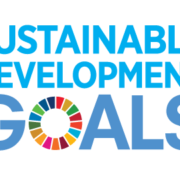A review and reflections on the ODI working paper: “From best practice to best fit: understanding wicked problems in international development.”
As philosophers, neuroscientists, pop singers and marketeers have known for years, as human beings the things we notice most in the world around us, are the things already in our own heads and own worlds. So it seems as we at Wasafiri have become more interested in how to apply complex systems thinking to our work, suddenly complexity thinking seems to be everywhere.
While there is a lot of interest in complexity based approaches to development issues, most of this ‘interest’ has stayed at a fairly conceptual and theoretical level. Generally, because whilst the theory might make sense, the application has proved, well, complex.
The ODI, working with DFID, have published a working paper that attempts to confront this gap between theory and application. The paper, ‘From best practice to best fit’, examines a number of case studies in using complex systems approaches to deal with ‘wicked problems’ and, whilst acknowledging the limits of seeking generalised lessons, they offer some general points. At 55 pages the paper is far from a quick read – so here is a bit of a premise based on my almost-quick read.
- Wicked problems are juxtaposed with ‘tame problems’ – (they have a rather nice table comparing the two on page 2). The wicked problems are those where the problem is difficult to define, has many contributing factors, where the solutions are not singular and where there is no ‘end point’ for when the problem is solved. Rather, the aim if to make things ‘better’.
- Development approaches have been dominated by the logical framework approach – which works well for tame problems (where a linear relationship between problem-inputs-outputs-solution can be mapped), but for problems where there are complex sets of relationships, where the causes of the problem are multiple and where the end point is unclear, logical frameworks have proved limited and are highly criticised.
- From best practice to best fit – best practice has become a dominant paradigm and assumes that what works in one setting can be applied to another. This approach allows the building of generic tool kits and supports the career paths of ‘technical experts’ (that last bit might be my view). By comparison, best fit emphasises adaptability to local and changing contexts, recognising the imperfect and unique starting point.
So how to work with wicked problems?
The paper cites a number of case studies which give more insight into the messy reality of the work done, in summary:
“dealing with such [wicked problems] requires us to recognise the systemic nature of the issue; understand the interactions among key actors and their behaviours; identify the dynamics and patterns of the issue; pinpoint the range of possible intervention points; work flexibly with a range of approaches; and adapt over time.”
Key specifics they offer include:
- Use of systems mapping to explore the relationships between actors and make visible the different issues, policies, agencies etc. that impact on the ‘wicked problem’ being explored.
- A portfolio approach using mapping to identify entry points to influence the problem and then launching multiple, small interventions which act on the problem in different ways.
- Iteration and real time learning about the impact of interventions, using ongoing monitoring; and being willing to adapt, change and even abandon interventions that don’t seem to have the desired impact.
- Shorter planning horizons in not expecting to lay out a 5 year plan and keep to it come what may; and rather, knowing “that complexity or wickedness in the environment needs to be respected and uncertainty navigated, not retreated from.“ This is a particular challenge to the dominance of well constructed business cases, budgets, plans and the optimism bias to which they lead.
Criticising logical frameworks is a well worn argument; and to be fair, for the right job they are still a good tool. However, finding viable alternatives has proved far from easy.
We have been experimenting for several years with developing ways to work with and not despite the complexity we find in our work. I think a key revelation for us is that the nature of the complexity we face is different. So, when working in conflict affected environments, or on countering violent extremism, the way the environment and context constantly changes and evolves make it a ‘wicked problem’ and real time research becomes very important. In agricultural development the context is often more stable, but the way the stakeholders –such as government, private sector and smallholders– interact with and impact on one another, is often underestimated and even ignored in the meta planning process. So stakeholder engagement platforms become fundamental to creating any change.
Ultimately, whilst we and many others will continue to experiment with systems thinking, complexity and wicked problem based approaches, it may well be that the more radical change is applying such thinking to the frameworks, TORs and M&E requirements that drive the funding of development programmes. Be it from NGOs, national donors, or international organisations, if we all want to see more varied and adaptable approaches to development, then we need more varied and adaptable approaches to commissioning and monitoring our work.








